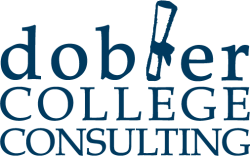What is the Coalition Application?
 You’ve heard of the Common Application and you might even have heard of the Universal Application. But just how much do you know about the Coalition Application?
You’ve heard of the Common Application and you might even have heard of the Universal Application. But just how much do you know about the Coalition Application?
Unless you’ve been paying very close attention to the sporadic media coverage or know someone in the college world who’s had an opinion on it (and there are many!), you probably haven’t heard too much about the Coalition for Access, Affordability, and Success.
The announcement of this new application occurred this past October. Recognized as some of the most selective colleges in the country, the Coalition Colleges say they want to increase college access for all students while providing a newer and more innovative way for students to apply. Although many of these colleges currently use the Common Application, one of the stated reasons these schools have formed the Coalition Application stems from the issues, technological being one of the more significant ones, the Common Application experienced in 2013.
To date, over 90 schools have joined the Coalition and apparently more are on the way.
These colleges feel that the admission process has been hindered by these issues and students have been limited in their ability to showcase their own innovation, creativity and overall performance. Therefore, the new Coalition Application will have virtual lockers for students where they can enter their work and accomplishments over a four year period of time. The Coalition’s virtual locker is planned to include: extracurricular activities, interests, writing samples, college essays, videos and more. Information to the colleges where the students choose to apply will not be available to them until the student releases their locker during their application season.
The Coalition intended to release this application to students in January, but due to demonstrative feedback from school counselors and independent counselors across the country, the official launch has been pushed back. The locker will be available in April while the application itself will launch over the summer. When it does launch, the manner in which students prepare for and apply to colleges could very well be unlike anything we’ve ever seen before.
The Coalition Colleges state that their intention is to provide early preparation and access to all students, regardless of financial means. However many counselors, like myself, are concerned that high school will become about just how much students can cram into their lockers in an all-out effort to impress a college rather than doing things that matter to them.
At this point, many questions remained unanswered:
- Will colleges favor one application over the other?
- How will the virtual locker be evaluated?
- Will these colleges use interaction with the locker to measure demonstrated interest and factor that into admissions decisions?
- If a 9th grader adds a college to their “my colleges” list, what type of communication will the college have with them?
- What will the competition aspect be like?
- What are hard timelines for the application?
Ultimately, the optimistic side of me says that the goal here is to make the application process more holistic so that colleges can gain more insight on applicants over a period of time. The Coalition believes in early engagement, being more transparent, increased interest in the public and collaboration.
These are fine ideals with good intentions. However, as we all know, the road to Hell is paved with good intentions.
Stay tuned. It’s going to be an interesting ride.
If you would like some assistance with your college search or financial aid process, contact me today for a free 60-minute consultation.
Here’s what other families like yours are saying about how Dobler College Consulting made a difference for them.



